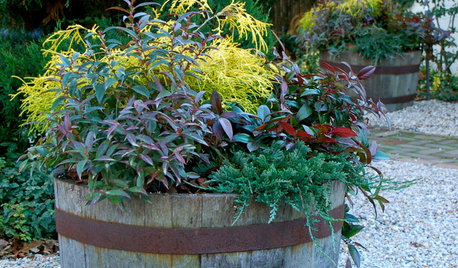Cupressus cashmeriana winter damage question
nikkie_in_toronto
10 years ago
Related Stories

GARDENING GUIDES7 Ways to Get Your Container Garden Ready for Winter
Learn how to transition your fall pots to colder weather — and which plants to lose, keep or add
Full Story










Embothrium
fairfield8619
nikkie_in_torontoOriginal Author
ken_adrian Adrian MI cold Z5
abciximab
Embothrium
gardener365
fairfield8619
nikkie_in_torontoOriginal Author
blue_yew
pineresin
ken_adrian Adrian MI cold Z5
nikkie_in_torontoOriginal Author
fairfield8619
davidrt28 (zone 7)
nothotsuga
davidrt28 (zone 7)
davidrt28 (zone 7)
fairfield8619
nikkie_in_torontoOriginal Author
davidrt28 (zone 7)
Embothrium
nothotsuga
nikkie_in_torontoOriginal Author
Embothrium
davidrt28 (zone 7)
davidrt28 (zone 7)
nothotsuga
ken_adrian Adrian MI cold Z5